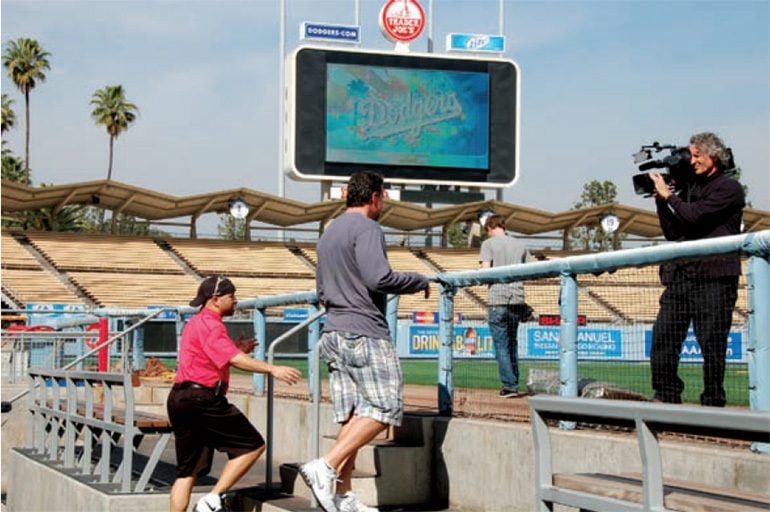Photo by Kazuky Akayashi. | wildsplash.photography
Approaching the Rewrite and How to Know When You’re Done
Written by Paul Chitlik
I’ve used the word “approaching” because approaching a rewrite is something to be taken seriously, like approaching a wild animal. You never know what’s going to happen. A serious confrontation might occur. Or, everything could be just fine. Or something in between.
No one would approach a wild animal without training and proper equipment, not to mention a little coaching and maybe some help. In this article, I hope to provide you with a summary of the tools you will need when you finally get up the nerve to confront your script. I’ll give you a procedure that’s been good for me and the thousands of writers I’ve worked with. We’ll even take a little time, just a little, to write a few things to jump start your process. Once you’ve finished reading, I hope you will have a plan to tackle the beast. If you don’t, you can follow the one at the end of this article.
This article is for experienced television writers and screenwriters as well as newbies. Though it helps to have completed a screenplay beforehand, you’ll find that this way of organizing a rewrite will help you get started on a script as well. We will be reviewing structure, conflict, action writing, dialogue, cuts, presentation and more. You should have a piece of paper and a pen or your laptop at the ready. Here goes.
Before you begin the rewrite, you need to do some re-reading of your script. I recommend you give your script eight reads to get things going. If you think that’s a lot of reading, and you’re bored by the thought of it, then you’re in for some heartache and disappointment because scripts take an average of 25 rewrites (Yes, 25!) before they reach the film set. That doesn’t mean page one rewrites; it could be just a change of location or character’s gender. But in a WGA panel of award-winning writers, this was the average. So, you need to be prepared to read your script many times.
The first read is for structure. Just as a house has a foundation and framing, a film has seven points. Or at least most American films do. These are bridge towers that the scenes hang from. They are present in almost all films in one way or another. Here they are in summarized form (for more, and for examples, see my book, “Rewrite: A Step-by-Step Guide to Strengthen Structure, Characters, and Drama in Your Screenplay”). I didn’t invent these points, but I have renamed one or two.
#1. Ordinary Life
Getting to know who the central character is and what his issue (flaw) is. We see the protagonist in his usual surroundings, dealing with the usual people in his life, but we also see that he has some issues and that there is a need for change. He may or may not know that.
#2. The Inciting Incident
Usually around Page 15 (or 15 minutes into the film), give or take a couple of pages. Something happens to your protagonist that will change his life forever. Eventually, it will compel him to act. It will help him define his goal.
#3. End of Act One
When your character decides on a course of action in order to deal with whatever the inciting incident brought up. Usually, another major event forces him to decide that he must take action to reach a new goal. He creates a plan to help him reach that goal. This usually occurs between Pages 25 and 35. Now your character has a goal, and your story has focus.
#4. Midpoint or Turning Point
Yes, this does happen right around the middle wherein the action takes a sudden and new unexpected direction. The goal may change. The central character may realize what his flaw is. His true need becomes more important than what he wants.
#5. The Low Point
End of the second act. The all-is-lost point in terms of the goal. It appears there’s no way in hell he’ll ever reach his goal. Happens around Page 75-85 depending on the length of the script.
#6. The Final Challenge
At the beginning of Act III, your protagonist sees something, hears something, or even remembers something that reanimates him and gives him or her the will to continue. Then he prepares to face the final test, the final barrier that your character must overcome in order to reach his or her goal. The last, biggest battle. The run across Manhattan to proclaim his love. The final struggle to the summit. The last ten yards. This occurs very close to the end of your film.
#7. The Return to (the Now Changed Forever) Normal Life
Two or three pages to show us that life goes on and that our character has triumphed and changed.
Does your script have these seven major parts? If not, take some notes and figure out what’s missing. They don’t have to fall on the page numbers I indicated, but that’s just usually where they do.
EXERCISE:
Write the seven points of your main story in a line or two. By the way, there are at least three other stories in your script, right? The story dealing with the protagonist’s central emotional relationship, the story dealing with the protagonist’s personal growth (dealing with his flaw), and the antagonist’s story.
Next, make sure your scenes have a beginning, a middle, and an end, and, in fact, follow the seven points as well. Okay, that’s the structure of your script.
Now read your scenes for three elements: conflict, character, and story. If a scene has no conflict, put some in or take the scene out. If the scene doesn’t tell you something new about your character or move the story forward, take it out or make sure it fulfills the purpose of the scene. And there are only two purposes for a scene: to move the story or elucidate the character.
Now read your descriptive paragraphs. Are they terse? Do they move the story? Do they tell the story in images? Are they grammatically correct when they need to be?
There are three separate reads for dialogue. In each, you should ask yourself if you can show it rather than say it. In other words, could your characters be doing something instead of talking about it? Then you’ll ask if each word – I mean each “a” and “the” – is necessary. The first dialogue pass is for the main character. Read each of his speeches and only his speeches. Are they consistent in voice? Could another character have said those words? Does his voice stand out from the crowd? How is the character reflected in his/her dialogue?
Now read for the antagonist’s dialogue.
Now read just the characters’ dialogue.
Now go over the whole script one more time and look for cuts. Delete any non-essential scenes (scenes that don’t move the story or illuminate the character), cut heads and tails off of scenes if possible, cut down dialogue whenever possible.
Then do the final spelling, punctuation, grammar, and sense pass. I call this the Mercedes pass because when you go to buy a new Mercedes-Benz, whose price is more or less equivalent to the WGA minimum for a script, you expect it to look perfect – no scratches, no tears in the upholstery, no dents. Same thing goes for a script – no typos, no spelling errors, no bad grammar unless you mean it in dialogue to delineate character.
This is a lot to tackle in a short article, but it should give you a sense of what needs to be done for each major rewrite (and you should do several before showing it to anybody, and I do mean anybody).
Maybe what you should do before you get into the weeds is follow this plan.
THE REWRITE PLAN
- Write a bio of the protagonist in his/her language
- Write a bio of the antagonist in his/her language
- Re-read the script, taking notes on all the subjects above
- Do a new beat sheet – add new scenes, cut old ones that don’t work
- Write new pages or rewrite old ones from the beginning.
- Re-read the script (yes, again) taking notes on all the subjects above.
You’ve heard the old saw that writing is re-writing. It’s true. Your first draft is like the block of marble that Michelangelo had quarried for The Pietá. When people asked him how he made such a perfect work of art, a sculpture that seemed to be alive and breathe, he said something to effect that, “I simply carved away everything that wasn’t The Pietá.” Now it’s your turn to carve. When you can’t carve away anything more, you’re done.

He most recently wrote, produced and directed the feature, “The Wedding Dress,” for Wedding Dress Productions, LLC, starring Hannah Cowley.
He has taught at ESCAC, the film school of the University of Barcelona, Spain: The Autonomous University of Barcelona’s MFA program; UNIACC in Santiago, Chile; Universidad de Zulia, Venezuela; as well as EICTV, the film school of Cuba. He was a long-time visiting professor at UCLA, and now is a clinical associate professor at Loyola Marymount University. He has advised the Chilean film development board on film projects and has served as Writer in Residence at the Ibermedia Colloquium in Santiago, Chile. His exclusive rewrite seminars have taken place in Perth, Australia; Cortona, Italy; Berkeley, California; Normandy and Burgundy, France; Cairo Montenotte, Italy; and Estanyol, Spain. His book, REWRITE (second edition) was published by Michael Wiese Productions in November, 2013. He is a frequent contributor to Written By, the magazine of the Writers Guild of America West.
Photo by Sharon McCutcheon. Instagram @mccutcheonphoto






